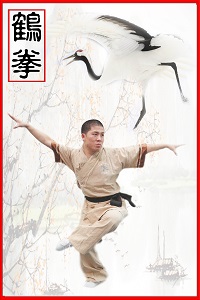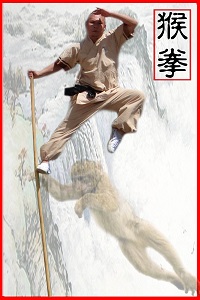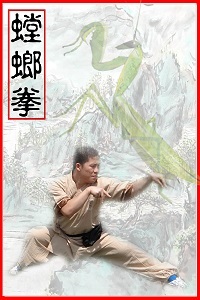Animal Styles
Tiger

The Tiger style (Hu Quan) is one of power, directness and simplicity. Its primary Weapons are the Fist and the Claw. Footwork is only used to interfere as the tigers needs good ground contact to develop and deliver it's power. Learning the Shaolin Tiger you will discover the power of simplicity and directness. You will learn to identify the main point of contention and then develop the skill and power to reach this point.
Crane

Crane style (He Quan) trains flexibility. The focus of the White Crane style is to make less use of physical strength, stressing evasion and strategic attacks to vulnerable areas instead.
Monkey

The Monkey stylist (Hou Quan) jumps, flips, rolls, and climbs to avoid his attacker. He attacks from peculiar angles, and contorts his body to strike when the opponent believes himself safe.
Eagle

Eagle claw style (Ying Quan) is an animal style derived from the grappling art of Shaolin Chin Na. It relies on very powerful seizing, pinching, twisting, and locking techniques to immobilize or punish an attacker. Eagle claw stylists work hard on developing their grips to facilitate application of painful locks and nerve pinches.
Snake

Snake Style (She Quan) trains chi (Internal Energy). The Snake goes for vital points. The eyes and throat being common targets. Snake movements are flowing and rippling with emphasis on the fingers.
Praying Mantis

Praying Mantis (Tang-Lang Quan) is a combination of a set of sophisticated deflections, counters, and grappling movements with Monkey style footwork (see Monkey style, below). The fundamental strategy of Praying Mantis is to wait patiently for an opening (often in the form of an attack), then tie the opponent's arms with a grappling technique and strike into soft areas and nerve centers.
